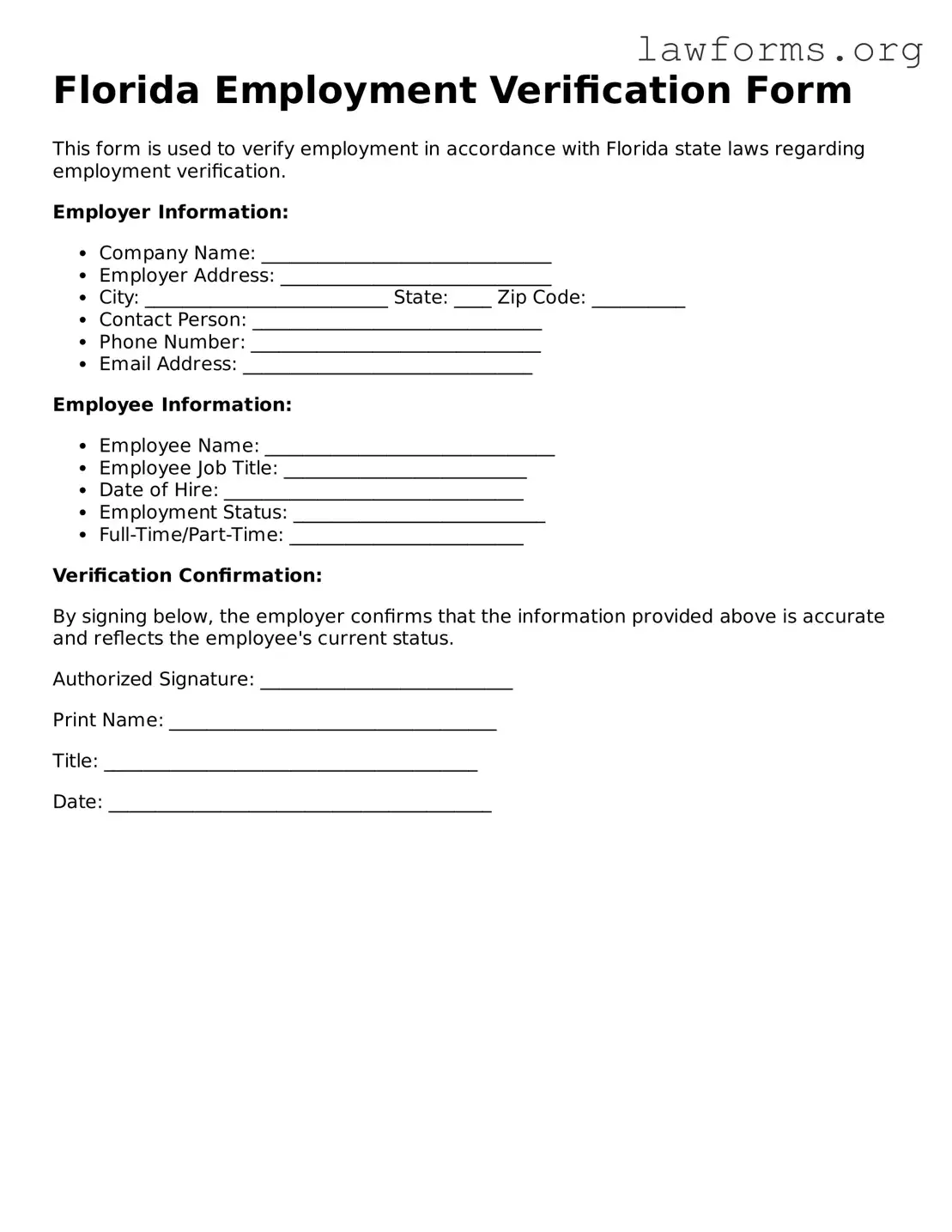Florida Employment Verification Form
This form is used to verify employment in accordance with Florida state laws regarding employment verification.
Employer Information:
- Company Name: _______________________________
- Employer Address: _____________________________
- City: __________________________ State: ____ Zip Code: __________
- Contact Person: _______________________________
- Phone Number: _______________________________
- Email Address: _______________________________
Employee Information:
- Employee Name: _______________________________
- Employee Job Title: __________________________
- Date of Hire: ________________________________
- Employment Status: ___________________________
- Full-Time/Part-Time: _________________________
Verification Confirmation:
By signing below, the employer confirms that the information provided above is accurate and reflects the employee's current status.
Authorized Signature: ___________________________
Print Name: ___________________________________
Title: ________________________________________
Date: _________________________________________
